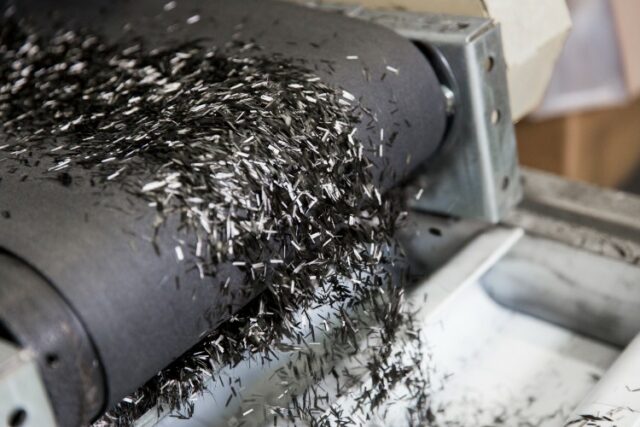When people think of sustainability initiatives, the first thing that comes to mind for most is recycling. But those blue bins and waste baskets for aluminum cans just scratch the surface of sustainability in terms of the circular economy. With foresight, commitment, and a spirit of “coopetition” among global corporate citizens, the waste reduction component of the circular economy is not just saving earth but creating new industries and jobs while also improving products.
One area that has benefitted from the cooperative approach to circular economy initiatives is recycled plastics. Every year, 11 million metric tons of new plastic waste enters the ocean. Unfortunately, once it has been washed out to sea it is reduced to a soupy, toxic mess that is harmful to the entire ecosystem — yet cannot be reused due to its condition. That’s where innovators such as NextWave Plastics comes into the picture.
NextWave Plastics is a consortium of multinational technology companies and consumer brands working to build the first global network of ocean-bound plastics supply chains and therefore decrease the volume of plastic litter that’s entering our ocean. Its operating model is a fascinating blend of advanced technology and human relationships. Data analytics help identify the global hotspots of plastic “leakage,” where the most amount of discarded plastics enters the ocean. Yet it is the non-technical half of the equation that is truly forward-thinking.
I think ocean-bound plastics is a great place to start to have that conversation to think about how material use and material sourcing could look different.”
– Kendall Starkman, Director, NextWave Plastics
Dell Technologies realized early on that even a company of our size could only do so much to reduce the impact of plastics on the planet, especially its oceans. The key to scalability was to share learnings and build a knowledge base, so we reached out to Lonely Whale to initiate the consortium. In coming together with other companies — often marketplace rivals — to pool knowledge and best practices, these multi-national corporations are developing the first global network of ocean-bound plastics supply chains.
Today, NextWave Plastics has 11 members and is on track to meet its 2025 goal of diverting 25,000 metric tons of plastics from the world’s oceans. It is also providing an operating model for how organizations — even competing ones — can successfully unite to amplify the impact of their socio-environmental responsibility initiatives.
Materials that are reused post-consumer, such the plastics in the NextWave Plastics project, are typically referred to as “recycled.” However, the circular economy promotes the usage of another type of waste as well. Reclaimed materials are pre-consumer waste created in the manufacturing process — i.e. something that couldn’t be picked up off the factory floor and poured right back in but would instead be thrown away. Dell Technologies has been actively innovating in this area.
For example, carbon fiber’s strength, rigidity and low weight make it ideal for the aerospace industry. But their processes create waste that normally cannot be reused, leaving material that would be thrown away. Working with our suppliers, we identified an opportunity to reclaim this carbon fiber as a raw material and recycle it into our laptops. Off-spec, excess or scrap carbon fiber is chopped and pelletized, then molded it into components that make laptops stronger, lighter and thinner. The material is also very recyclable, meaning that it can go from that original aerospace factory floor to a Dell laptop to yet another future use.
Technologies can also be layered on top of each other to exponentially increase the impact. For example, after their initial work to repurpose aerospace carbon fiber waste, Dell Technologies developed a way to combine that carbon fiber with recycled resin created from discarded 5-gallon water bottles. With that one innovation, engineers were able to increase the recycled content for a product from the initial 20% to 50%.
If a waste material is valuable, it won’t end up being burned or landfilled. You have to create demand, which then creates value. Because when there is value, people will find a solution instead of just moving it someplace else.”
– Nick Abbatiello, Sr. Distinguished Engineer, Dell Technologies
However, the effort to use reclaimed or recycled materials isn’t always smooth at first. Incorporating these materials starts in the design phase, and negative experiences with early recycling experiments left many product designers and engineers wary about quality and durability issues. The best way to overcome these objections, says Dell Technologies engineer Nick Abbatiello, is providing proof through prototyping. Another initial obstacle can be price. Creating demand drives value for the material, and at the beginning, a limited number of suppliers can result in elevated costs. However, entrepreneurial companies tend to follow the money, and once more players are operating in a reclaimed materials space, prices drop due to commoditization.
Abbatiello has some solid advice for organizations who are trying to implement efforts to get their own programs off the ground. “It’s important to have early, measurable success,” he explains. “So, start small and build from there. Circularists must also heed to the rule of physicians, to first do no harm. It’s important make sure your solution doesn’t create a new problem accidentally, such as developing a new polymer that there is no aftermarket repurposing options for, eliminating the possibility of a closed loop.”
As noted in the Pew Trusts report Breaking the Plastic Wave, “there is no single solution” to resolving the economic and environmental challenges that are the byproduct of our current linear economic model. It will take an entire toolbox, with those tools being wielded by every economic participant. In fact, our next conversation on the circular economy is going to explore the many ways that individual and corporate consumers can play a role in promoting sustainability through circularity.
